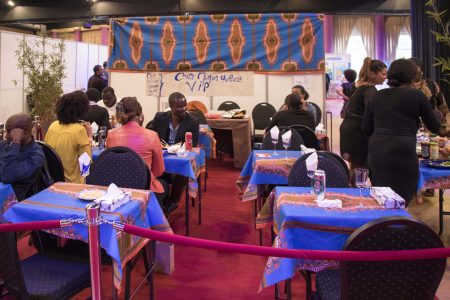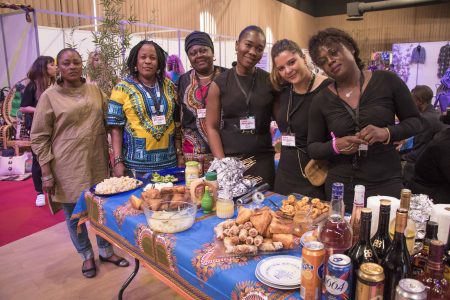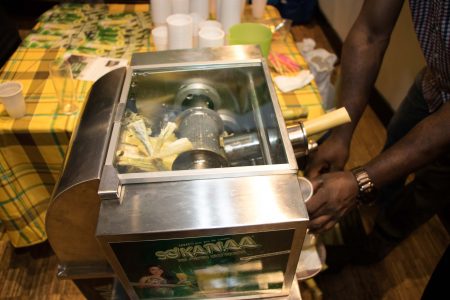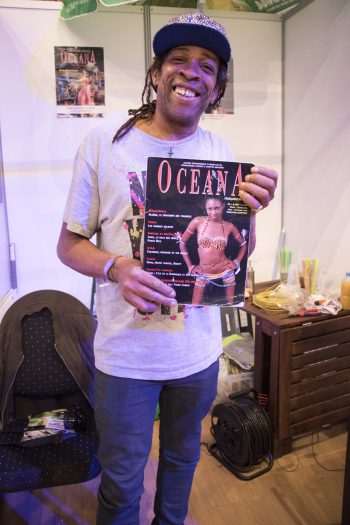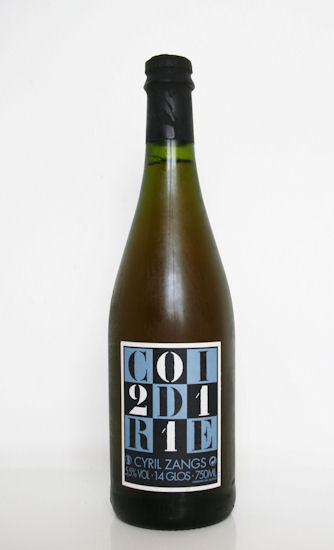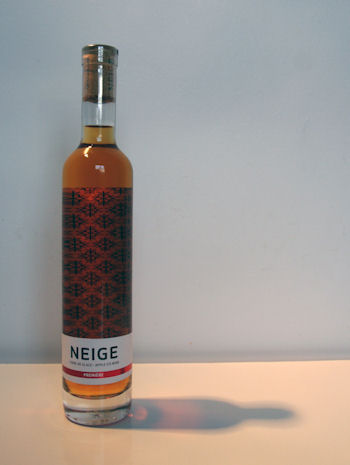
Neige
Photograph by www.DiscoverParis.net
In December, we were invited to attend a tasting of what I thought was going to be apple cider at Philovino, a wine shop operated by Bruno Quenioux. I blogged about tasting cider at Mr. Quenioux’s shop back in July of last year. This time, we were in for a big surprise because the “cider” that we came to taste was in reality an apple wine, or more specifically, an apple ice wine.
The concept of producing wine from frozen apples is confusing to the uninitiated. How, you might ask, does one get wine from this?
There are two ways* and both methods are used by La Face Cachée de la Pomme, the company that produces the wine that we tasted that evening.
Method 1 – Cryoconcentration
In autumn, very ripe apples are picked and kept in cool storage until winter. At the end of December, apples are then pressed and the freshly-extracted juice is placed outside in the extreme cold temperatures of January. Slowly, the water crystallizes and separates from the sugar. After a few days of intense cold, the concentrated apple nectar (called “must”) is drawn off and placed in stainless steel tanks where it ferments for a period of approximately eight months at low temperatures before being bottled.
Method 2 – Cryoextraction
In this method, apple ice wine is produced from varieties of apples that do not fall from the trees in autumn; they are picked in December and January when the temperatures are near –15°C. These apples have been dehydrated by the sun and literally cooked by the cold and the wind. Sugars have been concentrated through natural cryoextraction. The frozen apples are then pressed to extract the nectar. The must is then placed in stainless steel tanks where it ferments for a period of approximately eight months at low temperatures before being bottled.
More than 6kg of apples are required to produce 1L of apple ice wine.
We tasted this limpid, light-amber wine and were astounded by its intense apple aroma and rich apple-and-butterscotch flavor. In the mouth, it is soft, smooth, and very sweet, but not cloying. It makes a great after-dinner drink and can be served as an accompaniment with certain sharp cheeses, such as aged cheddar and blue-veined cheeses.
In searching the Internet to learn more about the apple ice wines that are produced by La Face Cachée, I was surprised to learn that the role that Mr. Quenioux played in their development has been overlooked. Quenioux was impressed by this wine when, as manager of the wine shop at Lafayette Gourmet (of the Galeries Lafayette department store in Paris), he tasted it for the first time. Sometime later, François Pouliot, founder of La Face Cachée, contacted Quenioux for advice on how to improve the quality of what was already a good product. Quenioux suggested using a different variety of apple and provided guidance on the process of fermentation. Now, five years later, Quenioux says that Neige tastes even better than when he first enthused about it.

Bruno Qenioux and François Pouliot in front of Philovino
Photograph courtesy of Philovino
Neige is sold in Bruno Quenioux’s wine shop:
Boutique Philovino
33, rue Claude Bernard
75005 PARIS
Open from Tuesday to Saturday
10:00 a.m. to 1:00 p.m. and 3:00 p.m. to 8:00 p.m.
*Information about the production of apple ice wine was gleaned from La Face Cachée Web site.
* * * * * * *Like our blog? Join us on
Facebook!

